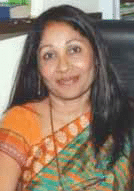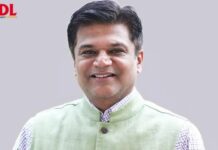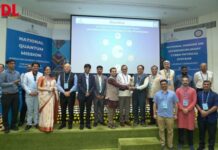 Nancy S Nanavaty, Academic Director, Phoenix Greens International School, believes that education shouldn’t be the premium of the people who can afford it
Nancy S Nanavaty, Academic Director, Phoenix Greens International School, believes that education shouldn’t be the premium of the people who can afford it
Please tell us about the genesis of Phoenix Greens.
Phoenix Greens was started with the aim to provide an alternate for disillusioned parents. Also, we wanted quality education to reach every child. Education shouldn’t be the premium of the people who can afford it. Usually that is what is happening. The parents who can afford it send their child to the best of the schools and spend a lot of money. Education should be within the reach of the common man. The middle-income group is the thickest of all the groups. We wanted to cater to them by giving quality education to their children. Our fee structure is very competitive. And like they say ‘paisa vasool’, for every penny that the parent pays, we give it back to them.
Education is not just academics; you need to educate the child in everything. It is all-compassing: personality development, leadership skills, presentation skills, how a child presents the work, how well he is groomed – the whole persona has to be taken care of by the school, not just ABCD. Because even a parent can do that.
But why does a parent say, “How does a school differ from another school?” It’s by bringing this holistic development. Everyone says that their school provides holistic development, but are we really providing it? What are the measures a school is taking to provide this holistic development?
Even a nursery class child from our school would be able to take the mic and speak. When we have the parents’ day, all the 300 children of our school are on the stage, and not just as the flower walls, paper flowers or as the trees swaying in the breeze. Everyone participates.
I also subscribe to the Glenn Doman way of thinking which says that every child is born a genius, he is born with a potential intelligence that was used by Einstein and all the great people. How we utilise this potential genius, how we stimulate the brain, is what is going to make this child an above average, below average or an average child. It is an awesome task for a school.
What are the challenges and opportunities in expansion?
Yes, absolutely till grade 12. We follow the CBSE board because I believe the CBSE is one of the most dynamic boards. We could have easily started with a Cambridge or the IB or ICSE curriculum, but CBSE is so dynamic, it’s within the reach and in the middle-income society, there are a lot of transfers. So wherever students go, they will be following the same thing. Our syllabus is CBSE, but our curriculum is international because we take the best practices and teaching methodologies from all over the world and we incorporate them in ours.
When you say syllabus, it’s a very narrow one. When you talk about curriculum, it’s a very broad perspective.
What are your views on technology in education?
It’s an absolute must. Even for the simplest of things, technology and education should go hand-in-hand. Unless the child does and sees something, education is not complete. Rote teaching does not happen now. Our theme changes every month. So when our theme is, say water, our children go and watch on YouTube what a water cycle is and what the different bodies of water are. Our nursery children also go to the computer lab.
They only know that is the monitor, this is the keyboard, this is the CPU, this is the hard drive, this is a pen drive and these are the CDs. Prep 1 and 2 start using the Paint and do a lot of activities. And nowadays, there are a lot of interactive activities. In the third term, the nursery children would be able to click the mouse to see. There are a lot of interactive sessions, like when they are doing the letters, if you say ‘A’, there’s a picture of an apple, a bat and a cat. And the child has to click the apple. So technology and education go hand- inhand.
What is your vision for the school in 2020?
Academically excellent, social responsibility, pride in being an Indian: as elaborate as that, that encompasses everything.
























